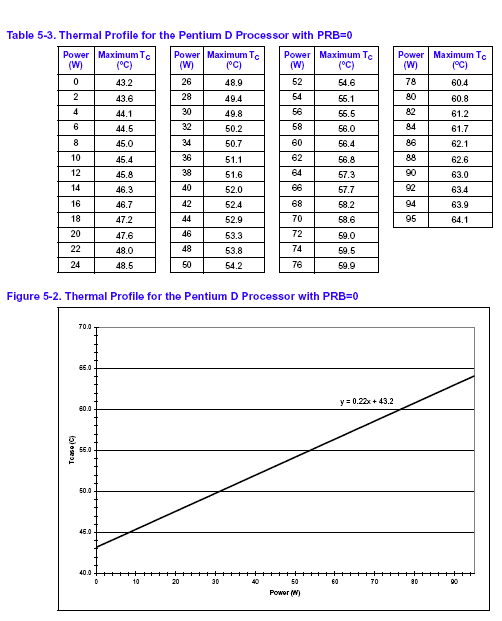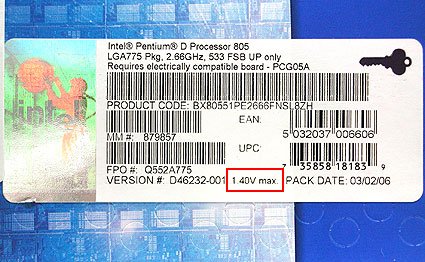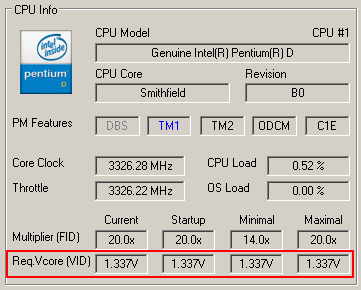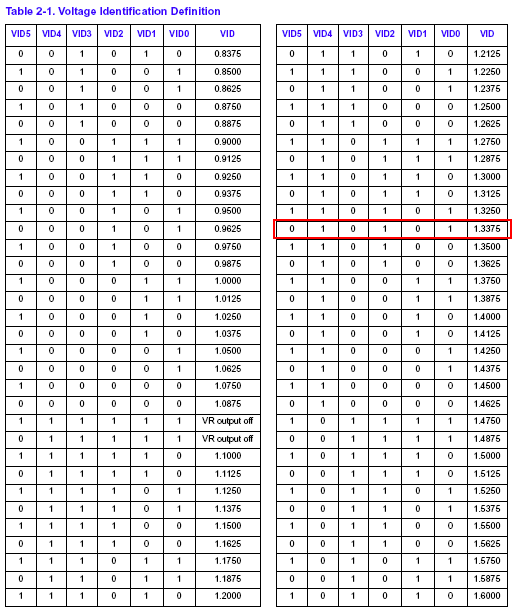A 4.1 GHz Dual Core at $130 - Can it be True?
Keeping Cool When Power Consumed Tops 150 Watts at 4.1 GHz, Continued
Graphical representation of linear temperature as power consumption increases
From the same datasheet, you can also observe that this CPU can accept input voltages ranging from 1.2 to 1.4 V. These voltage levels, however, can actually vary within the same series of CPUs; actual values for the CPU in hand are stored in ROM on the chip, and aren't specified on the packaging or in the Spec numbers.
No exact information can be found on the box: only the maximum input voltage of 1.4 V is printed.
The lower the standard voltage of a CPU, the lower its resulting power consumption and cooling requirements.
It's necessary to jump a few hurdles to access the CPU registers and read the actual voltage levels they contain.
A lower CPU voltage level generally indicates a higher-quality CPU. That's because the transistors require less voltage to change states, which also substantially raises the chances of attaining high clock rates.
The CPU we purchased for testing shows an internal voltage setting of 1.3375 V.
Get Tom's Hardware's best news and in-depth reviews, straight to your inbox.
The voltage level you see on your Pentium D 805 must be the same or lower for you to attain the same overclocking result we achieved or do better.
Current page: Keeping Cool When Power Consumed Tops 150 Watts at 4.1 GHz, Continued
Prev Page Keeping Cool When Power Consumed Tops 150 Watts at 4.1 GHz Next Page Power Consumption Levels Top 200 WTom's Hardware is the leading destination for hardcore computer enthusiasts. We cover everything from processors to 3D printers, single-board computers, SSDs and high-end gaming rigs, empowering readers to make the most of the tech they love, keep up on the latest developments and buy the right gear. Our staff has more than 100 years of combined experience covering news, solving tech problems and reviewing components and systems.




